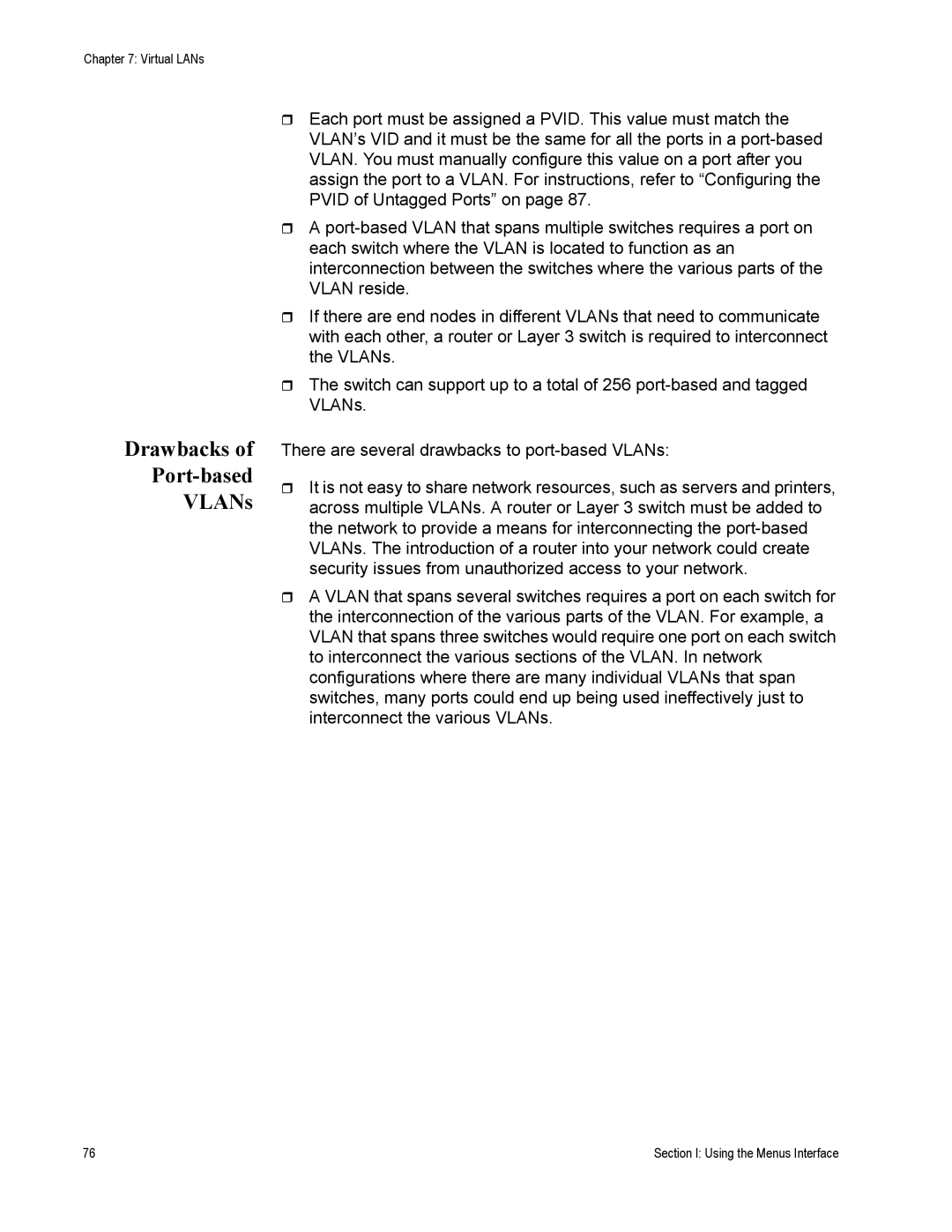Chapter 7: Virtual LANs
Drawbacks of
Port-based
VLANs
Each port must be assigned a PVID. This value must match the VLAN’s VID and it must be the same for all the ports in a
A
If there are end nodes in different VLANs that need to communicate with each other, a router or Layer 3 switch is required to interconnect the VLANs.
The switch can support up to a total of 256
There are several drawbacks to
It is not easy to share network resources, such as servers and printers, across multiple VLANs. A router or Layer 3 switch must be added to the network to provide a means for interconnecting the
A VLAN that spans several switches requires a port on each switch for the interconnection of the various parts of the VLAN. For example, a VLAN that spans three switches would require one port on each switch to interconnect the various sections of the VLAN. In network configurations where there are many individual VLANs that span switches, many ports could end up being used ineffectively just to interconnect the various VLANs.
76 | Section I: Using the Menus Interface |
